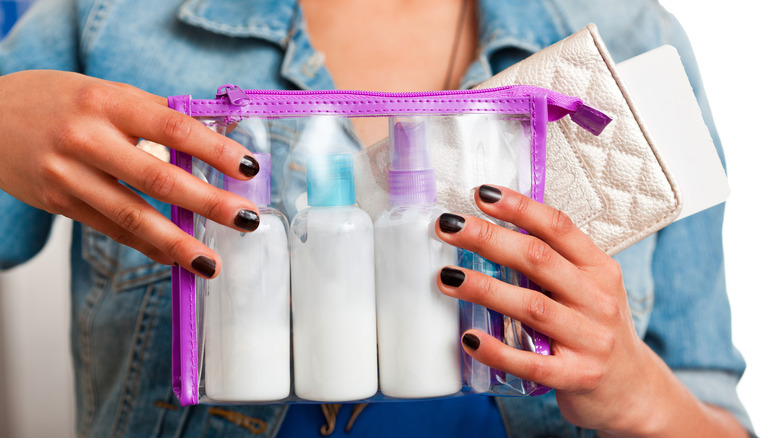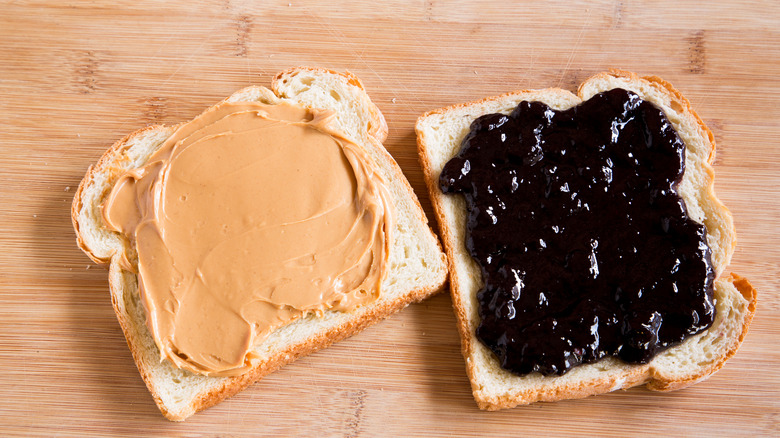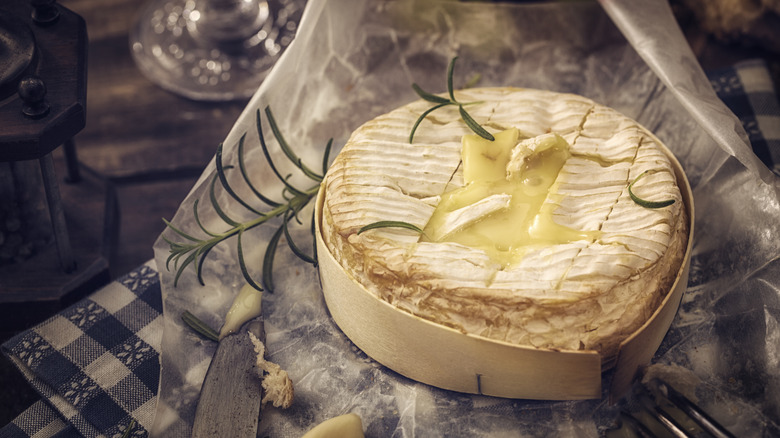The Most Bizarre Items TSA Considers To Be A Liquid
3-1-1. 3-1-1. How many frequent fliers out there have the Transportation Security Administration (TSA) rules on liquids permanently etched in their brains? As many of you know, when flying, any liquids in carry-on bags need to be in containers of 3.4 ounces or less, and those containers should all fit into one quart-sized bag. The rule doesn't only cover liquids, though. TSA states that liquids, aerosols, gels, creams and pastes all come under the 3-1-1 umbrella. Of course, there are several important exceptions to TSA rules, such as baby foods and medications.
The rules may seem simple enough, but there are some surprising items regarded as liquids under TSA rules. Want to take a jar of peanut butter away with you on your next vacation? That's a liquid (or perhaps a gel). Packing some glow sticks to wave around at a concert? Those are liquids, too. TSA has an extensive list of items that are subject to the 3-1-1 rule, so if you're ever in doubt, you can check that here. For your information and entertainment, we've collected some of the most bizarre items that TSA considers liquid.
Restricted spreads
Why exactly is peanut butter a liquid according to TSA? TSA took to Instagram to explain, writing: "a liquid has no definite shape and takes a shape dictated by its container." Following that definition, it's easy to see why several similar substances are also subject to restrictions.
Other items in the spread family mentioned by TSA specifically include creamy dips and spreads, hummus, and jam and jelly. So, whipping up your own PB and J sandwiches on the plane is out (unless you get the cute travel-sized packets). TSA also lists chocolate (liquid) as a no-no item, and we have to assume that the chocolate spread Nutella is also not permitted through security in large quantities.
TSA isn't the only one getting into the finer details of restricted items. The Canadian Air Transport Security Authority (CATSA) also has a long list of examples. In true Canadian style, maple spread is in the gel category. And in Australia, the Australian Border Force (ABF) has vegemite in the same category.
More restricted food items
Spreads like peanut butter aren't the only surprising food items that TSA counts as a liquid. They also list "cheese (creamy)" as governed by the 3.4oz rule. Similarly, the ABF in Australia imposes limits on the amount of soft cheese you can carry, citing brie and camembert explicitly. Yum!
Another incredibly specific food item on TSA's list is MREs (Meal, Ready-to-Eat). If these military rations contain liquids or gels, they're subject to control. (TSA mentions that MREs are sometimes restricted by airlines because of the self-heating element, which is another thing to bear in mind.) TSA also places "pet food (wet)" under the 3-1-1 rules. So, if you're traveling with your dog, kibble is the way to go.
Outside the U.S., the ABF restricts the amount of canned food with high liquid content (abalone, sardines, tuna) that can be taken in hand luggage. Finally, CATSA made us smile with two food items on its list: mashed potatoes and aerosol cheese strings. Both of these would need to sit in your little transparent bag next to your cleansers and moisturizers.
Random items TSA counts as liquids
We already talked about glow sticks, which will need to be put in your quart-sized bag along with other liquids. If you've read our article about contact lenses, you already know that the solution is regulated by TSA. But several other restricted items caught our eye, not because we don't think they're liquid, but because we'd never thought about them before. One was snow globes — yep, those cute souvenirs definitely contain some kind of liquid. Another item that appeared was "formaldehyde solution, less than 10 percent." Again, it's very specific and just not something most of us consider taking as hand luggage.
Finally, we want to end with something that is permitted by TSA but not by certain other authorities. TSA allows you to carry frozen liquids through security screenings, provided that the items are frozen solid. If TSA detects slush, you'll run into trouble! However, CATSA and the U.K. government do not allow most frozen liquids through their checkpoints. It's always worth checking local rules before you arrive at the airport with a ton of frozen maple syrup.
Speaking of the U.K., you might already be aware that big changes are coming to U.K. airports in terms of the liquid rules. While it doesn't look like the U.S. can expect to see these changes in the very near future, an easing of restrictions on liquids in hand luggage in other places in the world is on the horizon.



